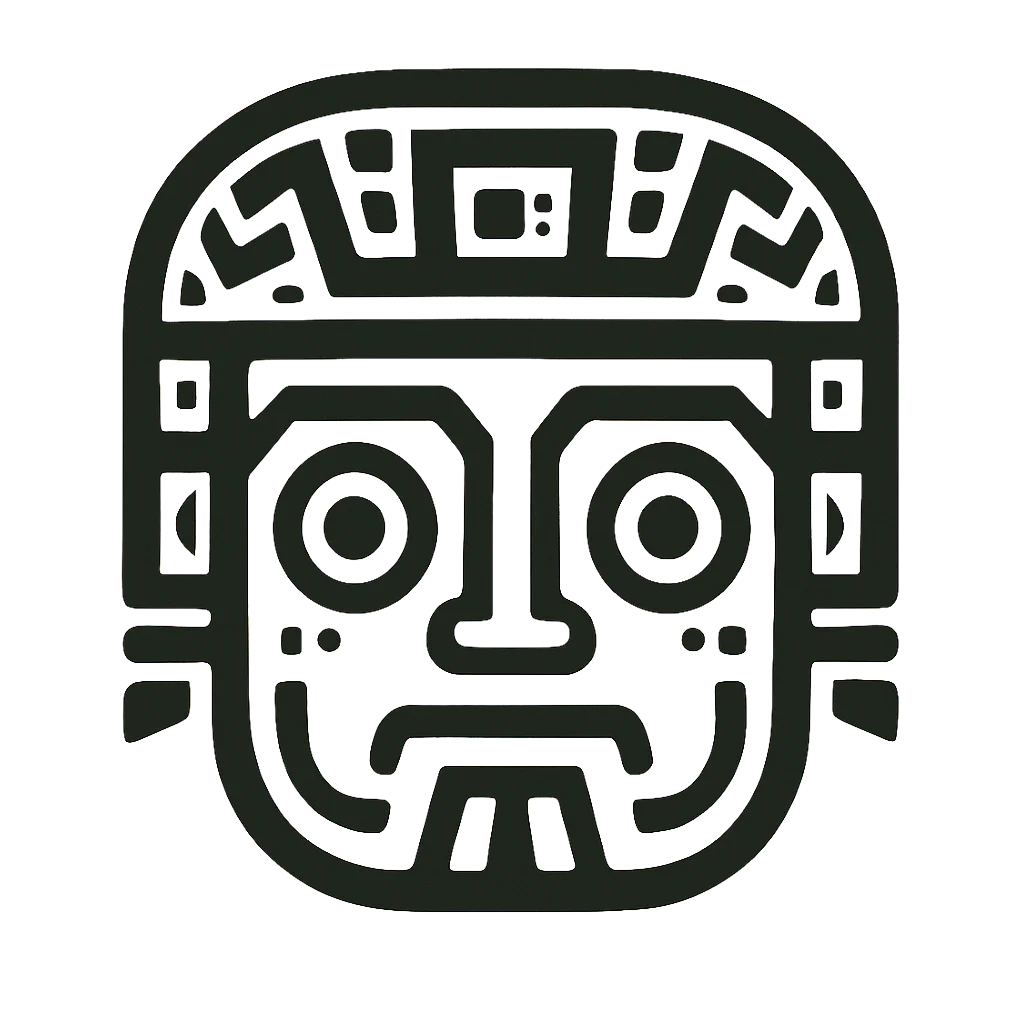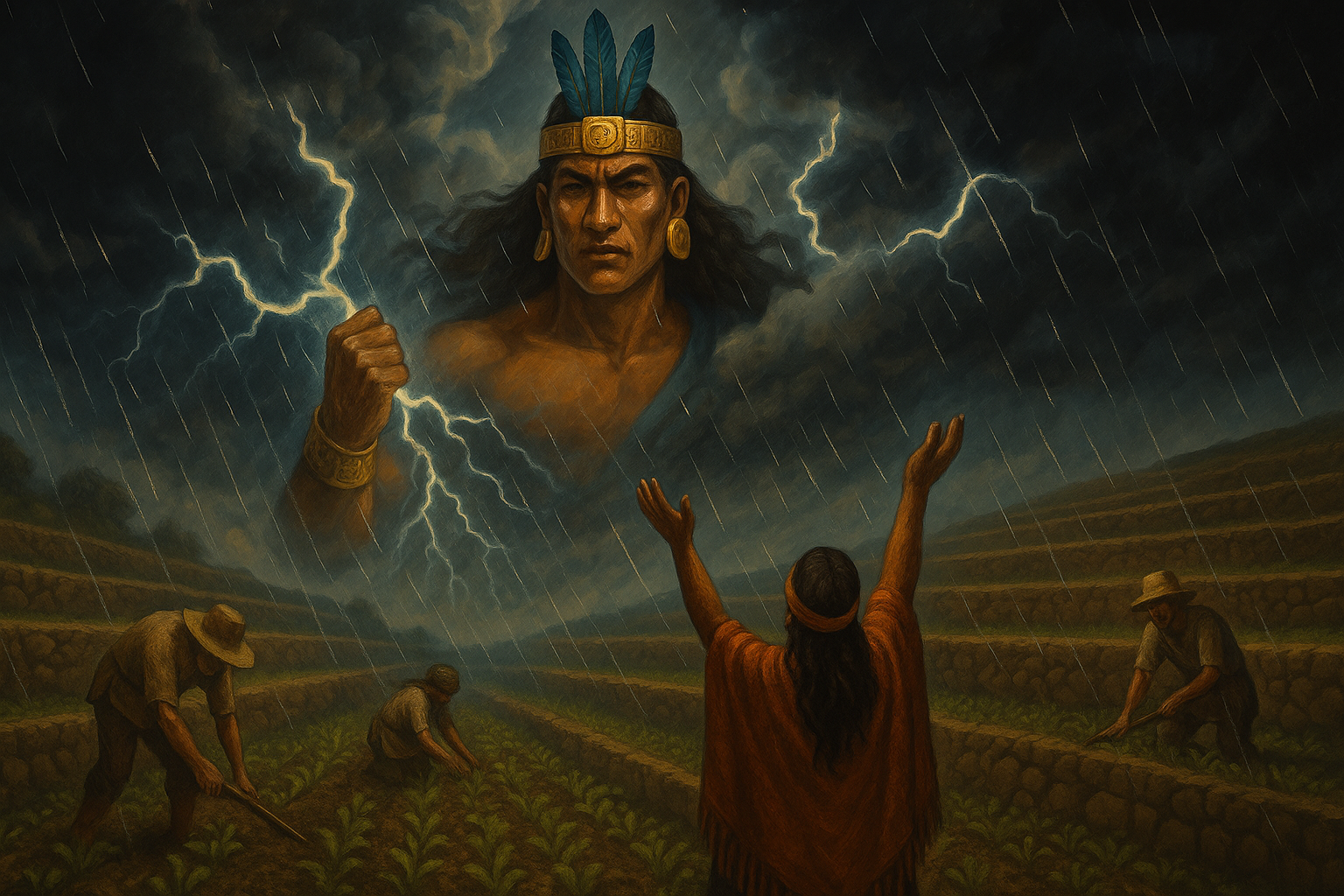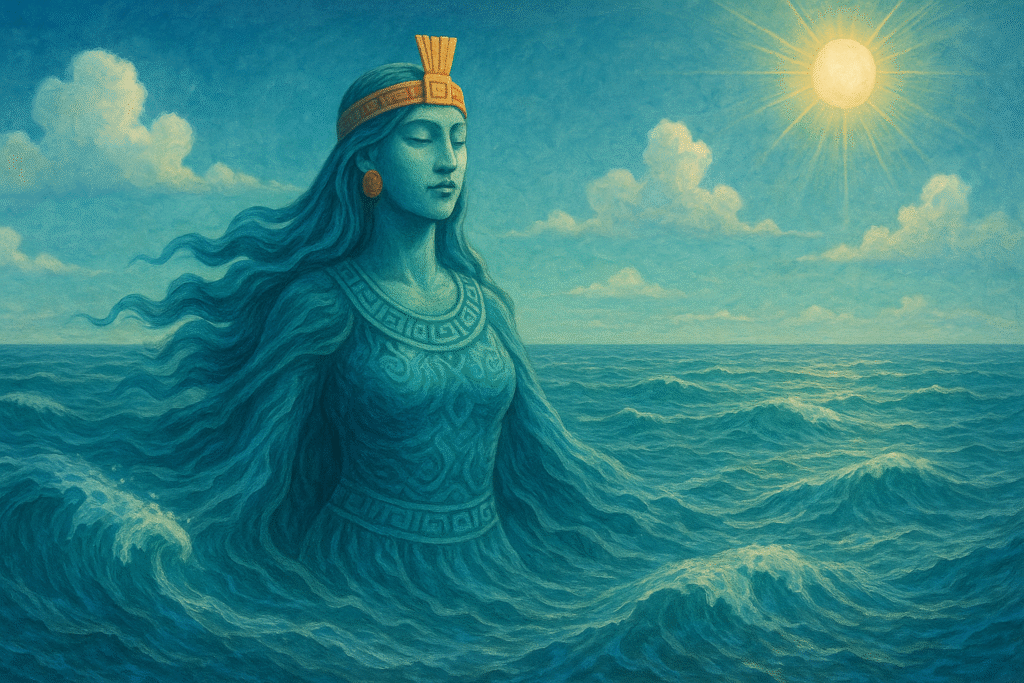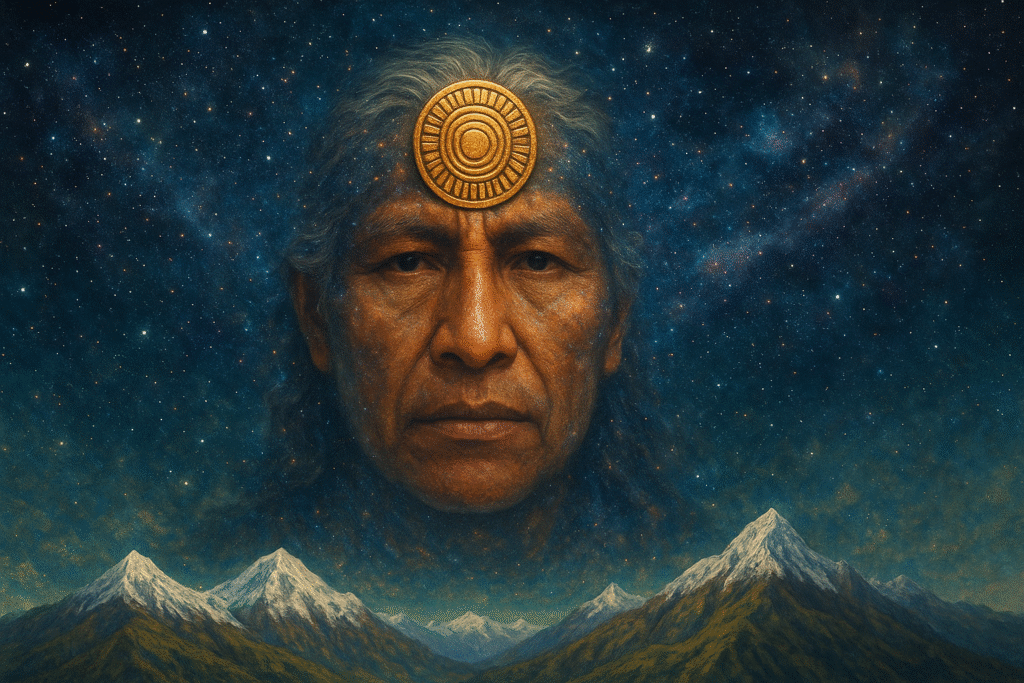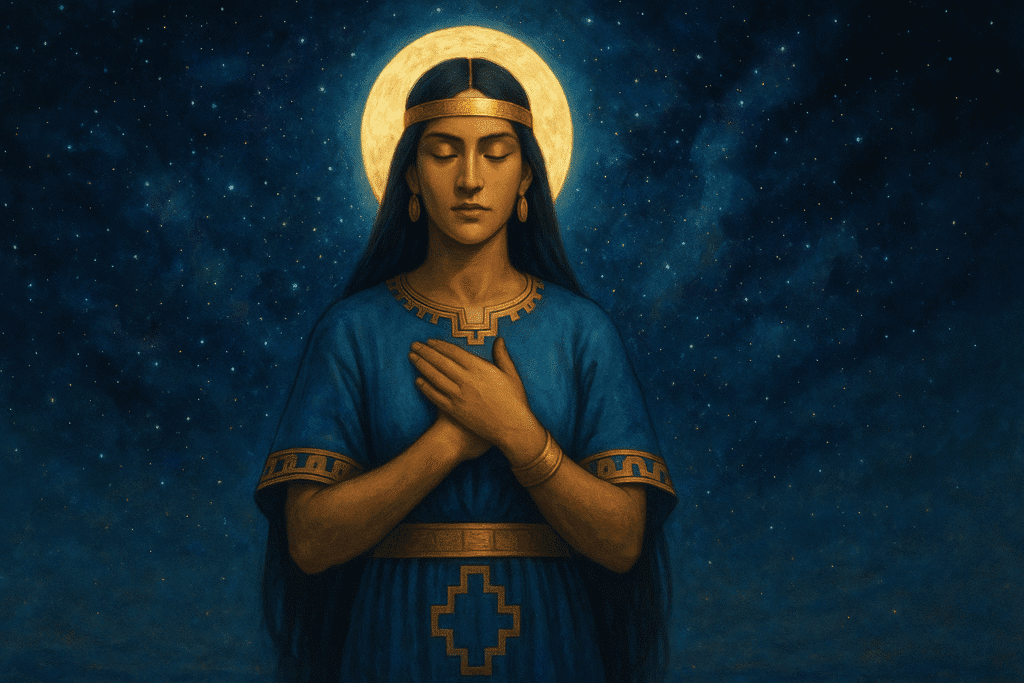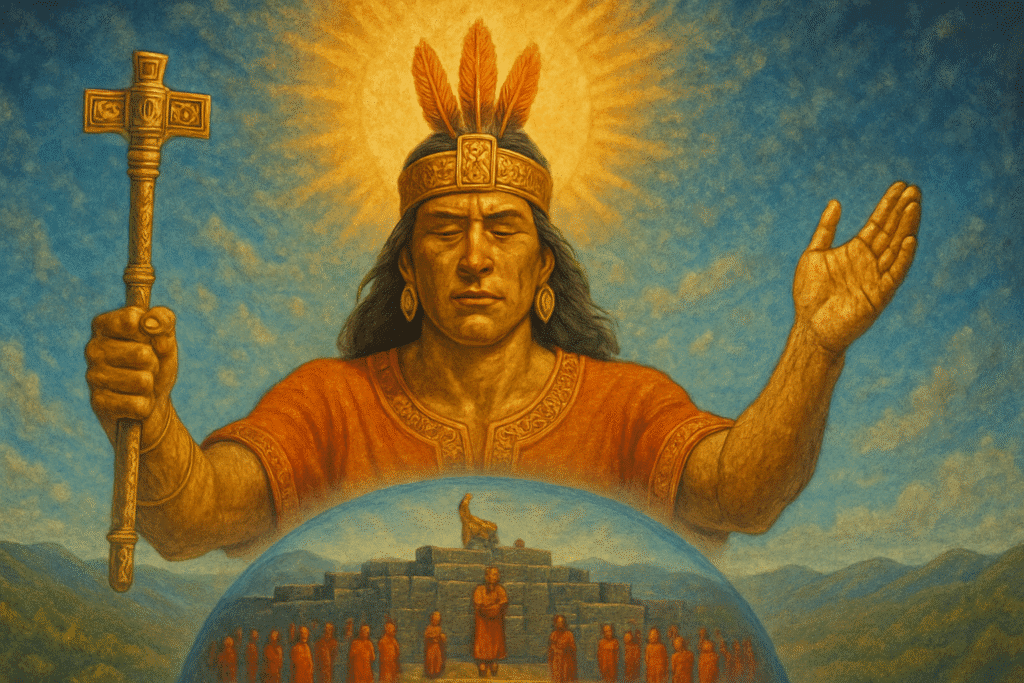In the vast Andean worldview, where every mountain, river, and star has significance, Illapa, the god of thunder and war, holds a special place.
Both feared and revered, Illapa was considered the guardian of the rains that ensured the fertility of the land and the survival of the Andean peoples.
His arrival was announced by thunder and lightning, which illuminated not only the skies, but also the spiritual life of the Incas. Knowing Illapa means delving into the myths of the Andes' powerful nature and the beliefs that unite the sky with everyday life.
⛈️ Who is Illapa?
Illapa, the Inca god of lightning, rain, and war, is a powerful celestial deity who embodies the forces of climatic phenomena and divine judgment. According to the Andean worldview, Illapa controls the weather and acts as a moral guardian, punishing arrogance and rewarding reciprocity with nature.
📜 Etymology and meaning of Illapa
The word comes from Quechua:
- Illapa = Lightning, thunder or flash
Its name embodies the meteorological phenomenon it represents, and its sound evokes the roar of thunder.
🏷️ Other alternative names
It has some variants depending on the region:
| Name | Associated context | Distinctive meaning or nuance |
|---|---|---|
| Apu Illapa | Cusco and other Andean areas | “Lord of Lightning”; emphasizes his divine hierarchy |
| Chuquiylla | Southern Highlands | “Spear of light”; linked to its warrior aspect |
| Pariacaca | Yauyos (central coast) | Deity of rain and thunder, later assimilated by the Incas as a form of Illapa |
| Catuilla | Yaros | Local variant emphasizing the punishments of the climate |
| Liviac | Llacuares y Yaros | Ancestral name linked to celestial fire |
🧬 Mythical Origin of Illapa
🔸 Birth on Condorcoto Hill
According to the Huarochirí Manuscript, Pariacaca is presented as a god who was born from five eggs atop Condorcoto Hill. Falcons were born from these eggs and then joined together to take human form.
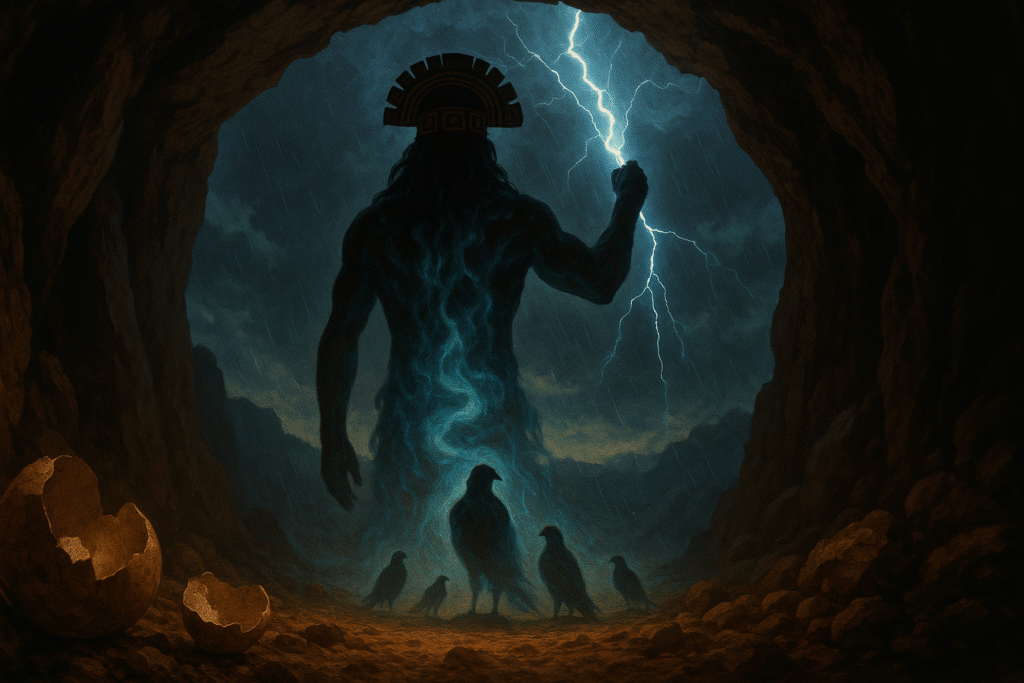
🔖 Myths associated with Illapa
🔹 Myth of the fight against Huallallo
In the Huarochirí manuscripts, Pariacaca (also known as Illapa) grew up and confronted Huallallo, a god associated with fire, drought, and child sacrifices. After a great battle, Pariacaca defeated Huallallo. With his victory came rain and fertility to the land, putting an end to the cruel sacrifices. Consequently, Pariacaca was regarded as a protective and benevolent deity, symbolizing the triumph of water over destructive fire.
🌌 Cosmic and social function
- Cosmic: He represented the vital energy that connected heaven and earth. As a deity, he could unleash storms and control the rain cycle, thus affecting agricultural fertility.
- Social: His presence emphasized the importance of the peasantry in the Tahuantinsuyo. The Inca's power was tied to his ability to negotiate with Illapa for plentiful harvests.
🧠 Interpretation and legacy
Illapa symbolizes the duality of creation and destruction: rain that fertilizes the earth and lightning that destroys. This concept reflects Andean yanantin logic, which is the complementarity of opposites.
After the arrival of the Spanish, Illapa was quickly associated with warrior saints such as Santiago and Saint Bartholomew, surviving in syncretic forms that are still recognized in Andean festivals with processions and invoked thunder.
✨ Conclusion
In the Andean worldview, Illapa was one of the most powerful and feared gods. He was the protector of humans, the bringer of rain and fertility, and a relentless judge. He symbolized the power of the sky and the interdependence between humans and nature.
The Incas' worship of Illapa demonstrates their understanding that life depended on the balance between the generosity and severity of the gods. Though his image changed with the arrival of Christianity, Illapa remains a symbol of cosmic power, morality, and respect for the forces of nature.
